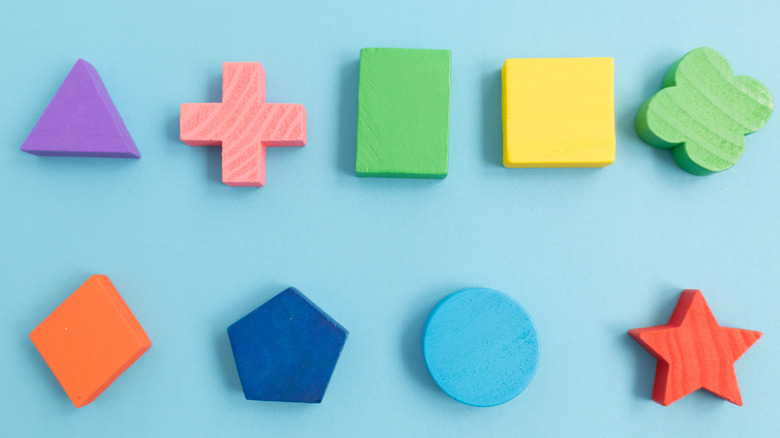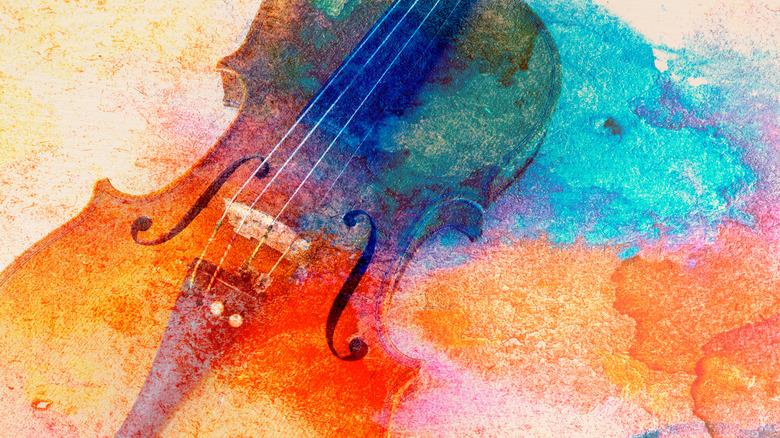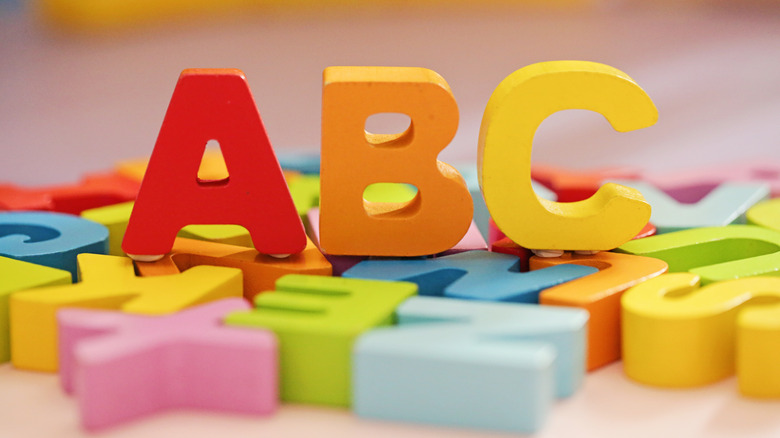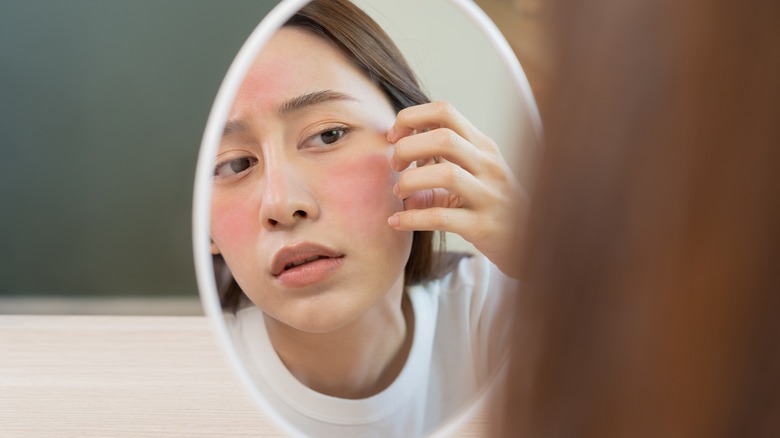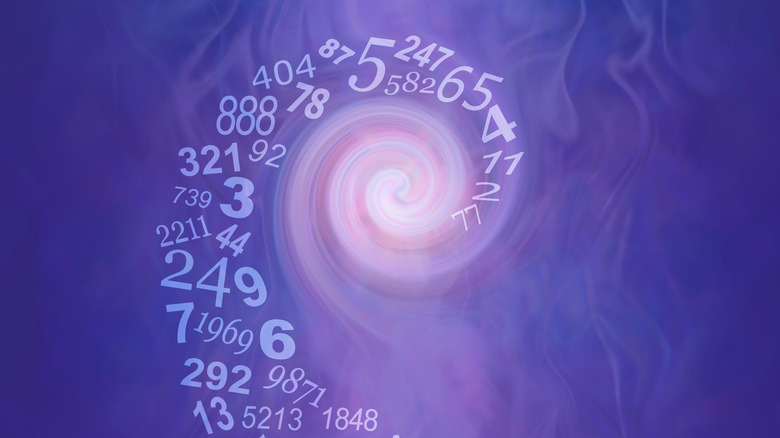These Are The Most Common Types Of Synesthesia
The word "synesthesia" may bring to mind the phenomena of colors in the air or smells you can taste. There are around 80 different types of synesthesia, according to the Synesthesia website, and any combination of two or more of the five senses can be considered synesthesia. Synesthesia occurs when the experience of one sense automatically triggers another. Probably between 2% and 5% of people have some form of it. It may occur because of communication between different parts of the brain that aren't usually linked in non-synesthetes. It may also be genetic (via Britannica).
The word literally means a union of the senses, from the Greek root syn (union) and aesthesis (sensation), according to the Internet Encyclopedia of Philosophy. While instances of synesthesia are described in literature from as far back as around 1700, the first medical report on synesthesia wasn't until 1812, and most in-depth research on it is relatively recent (via Britannica).
Chromesthesia
Chromesthesia involves seeing sounds in color. This can include everything from dripping water to birdsong to cars honking. Music in particular can also elicit sensations of movement, smell, or taste in addition to color (via Synesthesia). According to Vice, this is the most common type of synesthesia.
Chromesthetic reactions are spontaneous and instinctive but require a person to focus on the sounds they're hearing. Musicians may associate a certain color with a certain note or key. Among different synesthetes, it's fairly consistent that low notes are seen as dark colors and high notes as bright. The colors people with chromesthesia associate with certain sounds tend to stay consistent throughout the person's life. These colors often take the form of shapes, formed by dots or lines. The shapes or colors may change as a sound or song continues (via Synesthesia). Among musicians, Pharrell Williams, Billy Joel, Marina Diamandis, and Tyler, the Creator all have this type of synesthesia (via Vice and Sound of Life).
Grapheme-color synesthesia
Another of the most common types of synesthesia is grapheme-color synesthesia. It involves a person seeing letters or numbers as a certain color. While the color associations are different for each person, Synesthesia Test reports that many people see certain letters in the same color. For instance, A is often red. This may appear in the person's mind or as if physically written in the air (via Britannica).
People with this type of synesthesia have more activity in the part of the brain related to vision, according to The New York Times. They need less stimulation than most people to see flashes or rings of light called phosphenes. A study conducted at the University of Edinburgh showed that the associations with certain colors, letters, and numbers are fixed in the brain at a relatively early age, with 34% of associations being consistent by age 6 or 7 and 71% at age 10 or 11 (via Frontiers in Human Neuroscience).
Mirror-touch synesthesia
Mirror-touch synesthesia is when a person feels the same sensation of touch that someone else does (via PsyBlog). In other words, if they see someone rub their eyes, the synesthete will feel hands rubbing their own eyes. About 1.5% of people experience this type of synesthesia (via BBC). A similar and related phenomenon, not considered a type of synesthesia, is feeling pain when seeing another person get hurt. About 30% of people experience that.
The BBC suggests mirror-touch synesthesia may be a form of hyperactive empathy for other people. A professor from Goldsmiths University in London said people with this type of synesthesia may lack self/other representation, or the ability to separate their own experiences from those of others. These synesthetes sometimes have to stop and analyze whether the emotions they're feeling are based on something happening to them or to someone else, and it can lead to the person withdrawing from everyday life because they are overwhelmed by the feelings of others (via BBC).
Number-form synesthesia
Number-form synesthesia is when numbers appear as a mental map in someone's mind. This can also apply to things like days of the week or the alphabet. This type of synesthesia was first documented more than 100 years ago. It may occur because of cross-activation in the parts of the brain that handle numbers and spatial recognition, which are close to each other (via PsyBlog and Synesthesia Test).
Some people with number-form synesthesia visualize numbers in a sequence physically surrounding them or in front of them. Their visualizations may take different shapes, have different angles, or go in different directions, and they are usually three-dimensional. In any case, they are unique to the individual. As with other types of synesthesia, these associations usually stay the same throughout a person's life. It sometimes coincides with grapheme-color synesthesia, so the visualizations have color shading or the numbers within them are certain colors. A more specific type of synesthesia related to this one is calendar synesthesia, in which people visualize months or years physically (via Synesthesia Tree).
Personification
Personification, also called ordinal-linguistic personification, occurs when a synesthete associates something like a number, letter, or month of the year with a certain personality — for instance, thinking that T is friendly. Objects may also acquire personalities for some synesthetes, according to Synesthesia Test.
Based on their personality, a letter, number, and so forth can also take on a certain appearance, such as that of a person (i.e., because T is friendly it looks like a smiling child) (via PsyBlog). They may have relationships with each other, such as S being T's mother. They can have feelings, positive or negative, for each other. Again, these associations tend to stay consistent throughout a person's life, but a new one can develop at any time, according to Synesthesia Tree. This doesn't apply to situations like a child attributing certain personality traits to a stuffed animal, or even an adult doing the same with a loved object. It also doesn't coincide with pareidolia, having sympathy towards an inanimate object (via Synesthesia Tree).
